Did you know that underground vegetables, also known as root vegetables, have been cultivated for centuries and are a staple in many cuisines around the world? These humble veggies, growing beneath the surface, have a surprising impact on our health and culinary experiences.
Root vegetables, such as beets, parsnips, turnips, and rutabagas, offer a plethora of nutrients and flavors that can elevate any dish. From their vibrant colors to their earthy tastes, these subterranean delights are a treasure trove waiting to be discovered.
Key Takeaways:
- Root vegetables are a type of underground crop that provides essential nutrients and can be stored for weeks or months.
- They are low in calories, cholesterol, and fat, making them a healthy addition to any meal.
- Root vegetables like beets, parsnips, turnips, and rutabagas are packed with beneficial vitamins and minerals.
- Growing root vegetables in your own vegetable garden can be a rewarding and cost-effective way to enjoy these nutritious and delicious veggies.
- Explore the wonders of underground vegetables and discover a world of culinary delights!
What’s a Root Vegetable?
A root vegetable is a type of vegetable with an enlarged storage organ that grows underground. It provides essential nutrients for the rest of the plant that grows above ground. Root crops, like beets, parsnips, turnips, and rutabagas, are technically different from tuber crops, such as potatoes, sweet potatoes, and yams. Onions, garlic, and shallots, although they grow underground, are considered bulbs.
Root vegetables are an integral part of many cuisines around the world. Their unique flavors and textures make them versatile ingredients in a variety of dishes. From soups and stews to roasted vegetables and salads, root vegetables can be enjoyed in countless ways.
“Root vegetables are the unsung heroes of the vegetable world, providing a nutritional punch and adding depth of flavor to meals.”
– Chef Emily
Root vegetables are not only delicious but also highly nutritious. They are rich in vitamins, minerals, and dietary fiber, making them an excellent addition to a balanced diet. Additionally, their low-calorie content makes them a great option for those seeking to maintain a healthy weight.
Types of Root Vegetables
There are various types of root vegetables, each with its own distinct characteristics and flavors. Here are some popular examples:
- Beets: These vibrant vegetables have a sweet and earthy flavor. They are rich in folate, manganese, and vitamin C.
- Parsnips: Parsnips have a nutty and slightly sweet taste. They are a good source of fiber, vitamin C, and several B vitamins.
- Turnips: Turnips have a mild and slightly peppery flavor. They are high in vitamin C and fiber, making them a great choice for a healthy and filling meal.
- Rutabagas: Rutabagas have a slightly sweet and peppery taste. They are packed with vitamin C, potassium, and fiber.
- Onions, Garlic, and Shallots: While technically bulbs, these underground vegetables add delicious flavors to a wide range of dishes. They are known for their distinct aromas and health benefits.
With their unique characteristics and versatile uses, root vegetables are a valuable addition to any meal. Whether you’re roasting them as a side dish or incorporating them into a hearty soup, these underground gems are sure to add a delicious and nutritious touch.
Nutritional Profile of Common Root Vegetables
| Root Vegetable | Vitamin C (mg per 100g) | Fiber (g per 100g) | Potassium (mg per 100g) | Calories (kcal per 100g) |
|---|---|---|---|---|
| Beets | 4.9 | 2.8 | 325 | 43 |
| Parsnips | 17 | 4.9 | 375 | 75 |
| Turnips | 21 | 1.8 | 233 | 28 |
| Rutabagas | 25 | 2.3 | 337 | 39 |
| Onions | 7.4 | 1.7 | 146 | 40 |
Why Bother with Root Crops?
While root crops may not win any beauty contests, they offer a host of benefits. They are relatively inexpensive, packed with nutritional benefits, and can be stored for weeks or months. Root vegetables add versatile flavors to meals and are low in calories, cholesterol, and fat. They are also high in dietary fiber, making them a healthy choice for any diet.
Let’s take a closer look at why root crops are worth incorporating into your meals:
Nutritional Benefits
Root crops are nutritional powerhouses, packed with vitamins, minerals, and antioxidants. They provide a wide range of essential nutrients, including vitamin A, vitamin C, potassium, and folate. These nutrients support overall health and well-being, helping to boost the immune system, promote healthy cell function, and reduce the risk of chronic diseases.
Inexpensive and Long Storage
Root crops are budget-friendly options that offer a high nutrition-to-cost ratio. They are readily available in most grocery stores and farmers’ markets, making them a cost-effective choice for families on a budget. Additionally, root crops have a long storage life, allowing you to stock up and enjoy their benefits throughout the year. Proper storage methods, such as storing in a cool, dark place, can extend their shelf life even further.
Versatile Flavors
Root crops come in a variety of flavors, ranging from earthy and sweet to nutty and spicy. This versatility makes them a great addition to a wide range of dishes. They can be roasted, steamed, boiled, mashed, or added raw to salads and soups. Their unique flavors add depth and complexity to meals, enhancing the overall taste experience.
Low in Calories, High in Dietary Fiber
Root crops are naturally low in calories, making them an excellent choice for weight management. They are also high in dietary fiber, which aids in digestion, promotes feelings of fullness, and helps regulate blood sugar levels. The high fiber content of root crops contributes to a healthy gut and supports overall digestive health.
By incorporating root crops into your diet, you can enjoy their delicious flavors while reaping the nutritional benefits they offer. Whether you roast them as a side dish, mash them for a comforting puree, or add them to soups and stews, root crops are a versatile and nutritious addition to any meal.
| Root Crop | Calories per 100g | Dietary Fiber per 100g (g) |
|---|---|---|
| Carrots | 41 | 2.8 |
| Beets | 43 | 2.8 |
| Sweet Potatoes | 86 | 3 |
| Parsnips | 75 | 4.9 |
| Turnips | 28 | 1.8 |
Be Heart Healthy with Beets
When it comes to promoting cardiovascular health, beets are a root vegetable that packs a powerful punch. These vibrant vegetables are rich in betaine, an antioxidant pigment that provides important cardiovascular benefits. Let’s explore the various ways beets can be beneficial for your heart health.
One of the key advantages of beets is their high folate content. Folate is a B vitamin that helps reduce levels of homocysteine in the blood, which is associated with an increased risk of heart disease. Additionally, beets are a good source of manganese, iron, and other B vitamins that play a role in maintaining a healthy cardiovascular system.
Beets also contain nitrates, which are converted to nitric oxide in the body. Nitric oxide helps relax and dilate blood vessels, leading to lower blood pressure. By improving blood flow and reducing the workload on the heart, beets offer significant cardiovascular benefits.
Furthermore, beets are rich in potassium, a mineral that helps regulate blood pressure and maintain a healthy heart rhythm. Consuming foods high in potassium, like beets, can contribute to a lower risk of cardiovascular diseases.
But the benefits of beets don’t stop there. These root vegetables also have anti-aging effects. They are packed with antioxidants that help fight oxidative stress and reduce inflammation in the body, which can contribute to the aging process. Some studies even suggest that the compounds found in beets may inhibit the growth of cancerous cells.
The Nutritional Profile of Beets
To get a better understanding of the nutritional content of beets, here’s a breakdown of their key components:
| Nutrient | Amount per 100g |
|---|---|
| Calories | 43 |
| Folate | 109 μg |
| Potassium | 325 mg |
| Nitrates | 110 mg |
| Vitamin C | 4.9 mg |
As shown in the table above, beets are low in calories but rich in key nutrients that support heart health and overall well-being.
I love incorporating beets into my meals because they not only add vibrant color and earthy flavor but also provide numerous cardiovascular benefits. From supporting healthy blood pressure to fighting oxidative stress and inflammation, beets truly are a heart-healthy powerhouse.” – Anonymous
So, why not spice up your diet and enjoy the heart-healthy benefits of beets? Incorporate these root vegetables into your meals in various ways, such as adding them to salads, roasting them as a side dish, or even blending them into a nutritious smoothie. Your heart will thank you!
Cancer Protection from Parsnips
When it comes to cancer-fighting vegetables, parsnips are a standout performer. These pale, carrot-like root vegetables are packed with essential nutrients and antioxidants that offer significant benefits for overall health. Let’s explore the impressive array of cancer-protective properties found in parsnips.
1. Vitamin C: Boosting Immunity and More
Parsnips are abundant in vitamin C, a powerful antioxidant known for its immune-boosting properties. Vitamin C plays a crucial role in supporting healthy connective tissue, teeth, and gums. It also aids in the absorption of iron and helps heal wounds. Incorporating parsnips into your diet can help fortify your immune system and enhance overall well-being.
2. B Vitamins: Energizing and Nourishing
Parsnips are a rich source of B vitamins, including folate, thiamine, and niacin. These vitamins play a vital role in energy production, brain function, and the maintenance of healthy skin and hair. Consistently consuming B vitamin-rich foods like parsnips can provide you with the energy and nourishment you need to stay active and vital.
3. Vitamin K and E: Promoting Optimal Health
In addition to vitamin C and B vitamins, parsnips also contain significant amounts of vitamin K and vitamin E. Vitamin K is essential for blood clotting and bone health, while vitamin E acts as a potent antioxidant, protecting cells from damage caused by free radicals. Including parsnips in your diet ensures you’re getting these crucial vitamins to promote optimal health and well-being.
4. Antioxidant Compounds: Fighting Free Radicals
Parsnips boast a wide range of antioxidant compounds that help neutralize harmful free radicals in the body. These compounds, including polyacetylenes and phenolic acids, have been linked to a reduced risk of chronic diseases, including cancer. By including parsnips in your meals, you can benefit from the cancer-fighting properties of these powerful antioxidants.
5. Mineral Content: A Wealth of Nutrients
Parsnips are not only rich in vitamins, but they also contain essential minerals that contribute to overall health. These include calcium, copper, iron, manganese, selenium, and phosphorus. These minerals play vital roles in supporting bone health, brain function, energy production, and immune system function. Adding parsnips to your diet ensures you’re getting a broad spectrum of nutrients to support your well-being.
Overall, parsnips offer a potent combination of vitamins, antioxidants, and minerals that can help protect against cancer and support overall health. By incorporating parsnips into your meals, you can take advantage of their cancer-fighting properties and enjoy their delicious flavor. Get creative in the kitchen and explore the various ways to prepare parsnips for a tasty and nutritious addition to your diet.
Stay Fit and Trim with Turnips
Turnips are thick, round root vegetables with purplish-white coloring on the outside and tough white flesh inside. They are an excellent source of vitamin C and high in dietary fiber, aiding digestion and preventing constipation.
But the benefits of turnips go beyond their taste and texture. Research suggests that including turnips in your diet may contribute to reduced obesity rates and a lower incidence of stomach and colorectal cancer.
One of the key factors that make turnips a healthy choice is their high fiber content. Fiber not only aids digestion but also promotes a feeling of fullness, reducing the likelihood of overeating and helping to maintain a healthy weight. In addition, high-fiber foods tend to have a lower energy density, meaning they provide fewer calories per gram, which can further support weight management.
Furthermore, turnips contain phytonutrients and protein that have long-term health benefits. Phytonutrients are natural compounds found in plant-based foods that have been linked to various health-promoting effects, including antioxidant and anti-inflammatory properties. Protein, on the other hand, is essential for building and repairing tissues and supporting immune function.
To make the most of turnips, consider incorporating them into your meals in a variety of ways. They can be roasted, steamed, mashed, or added to soups and stews. You can even enjoy turnip greens, which are packed with vitamins and minerals.
Turnip Recipe Ideas:
- Roasted Turnips: Toss diced turnips with olive oil, salt, and pepper. Roast in the oven until tender and golden brown.
- Turnip Mash: Boil turnips until soft, then mash them with butter, garlic, and a pinch of nutmeg for extra flavor.
- Turnip and Potato Soup: Combine diced turnips, potatoes, onions, and vegetable broth. Simmer until the vegetables are tender, then blend until smooth.
By incorporating turnips into your diet, you can enjoy their delicious taste while reaping their many health benefits. So, why not give these versatile root vegetables a try and discover the positive impact they can have on your overall well-being?
Rutabagas, Low-Calorie Powerhouses
When it comes to nutrient-packed root vegetables, rutabagas are true low-calorie powerhouses. These golden yellow-fleshed wonders, also known as Swedish turnips, are a hybrid of wild cabbage and turnips. With their light brown outer skin, rutabagas add a pop of vibrant color to any dish.
What makes rutabagas so nutritionally impressive? For starters, they are rich in B-complex vitamins, just like their cousin, the turnip. These vitamins, including B1, B2, B3, B5, B6, B9, and B12, play a crucial role in maintaining good overall health. They support energy production, brain function, and the formation of red blood cells.
But it doesn’t stop there. Rutabagas also boast high amounts of vitamin C, an essential nutrient that supports a healthy immune system and helps the body absorb iron. Additionally, vitamin C acts as an antioxidant, protecting cells from damage caused by free radicals.
One of the standout health-promoting compounds in rutabagas is glucosinolates. These natural compounds have been linked to anti-inflammatory properties and may help reduce the risk of heart disease and certain types of cancer.
Furthermore, rutabagas contain phytonutrients, which are plant compounds that provide a wide array of health benefits. These phytonutrients support eye health, promote healthy aging, and assist in detoxifying the body.
The Nutritional Benefits of Rutabagas:
| Nutrient | Amount per Serving |
|---|---|
| B-Complex Vitamins | 7-11% of the Recommended Daily Intake (RDI) |
| Vitamin C | 23-28% of the RDI |
| Glucosinolates | Anti-inflammatory properties and potential cancer-fighting effects |
| Phytonutrients | Supports eye health and overall well-being |
So, if you’re looking to add a nutritious and flavorful twist to your meals, consider incorporating rutabagas. Whether roasted, mashed, added to soups, or used in creative culinary dishes, rutabagas offer a delightful combination of taste and health benefits.
“Rutabagas are a versatile root vegetable that packs a punch in terms of nutrition. Their B-complex vitamins, vitamin C, glucosinolates, and phytonutrients make them a fantastic addition to a well-rounded diet.” – Me, Copywriting Journalist
With their incredible nutritional profile and low-calorie content, rutabagas are a true gem among root vegetables. Don’t miss the opportunity to savor these tasty and healthful root crops.
Getting Started with Root Vegetables
Growing root vegetables is a rewarding experience that can be done even in small spaces. These nutritious crops thrive in full sun, so make sure to choose a location that receives at least 6-8 hours of direct sunlight each day.
When it comes to soil requirements, root vegetables prefer well-drained soil with a pH level between 6.0 and 6.8. It’s essential to test your soil before planting to ensure its quality and pH level. This can be done using a soil testing kit or by sending a sample to a local agricultural service for analysis.
If you have heavy soil, adding compost or organic matter can help improve its quality by enhancing drainage and increasing air penetration. This will create a better environment for root development and growth.
Planting root vegetables at the right time is crucial for a successful harvest. In general, they can be planted in early spring for a summer harvest or in late July or August for a fall harvest. These crops are relatively hardy and can tolerate chilly temperatures, allowing them to be harvested close to the first frost date.
Spacing recommendations vary depending on the specific root vegetable you are growing. As a general rule, aim for a spacing of 3-6 inches between plants and 12-18 inches between rows. This will give the roots enough space to mature properly and prevent overcrowding.
| Root Vegetable | Recommended Spacing |
|---|---|
| Carrots | 2-4 inches between plants |
| Beets | 3-4 inches between plants |
| Radishes | 1-2 inches between plants |
Proper care is essential throughout the growing season. Be sure to water your root vegetables regularly, keeping the soil evenly moist but not waterlogged. Mulching around the plants can help retain moisture and regulate soil temperature.
With the right preparations and attention to detail, growing root vegetables can be a successful and rewarding venture. Whether you’re a seasoned gardener or a beginner, these versatile crops are a great addition to any garden. Get started and enjoy a bountiful harvest of delicious and nutritious root vegetables!
Conclusion
Discover the wonders of underground vegetables and unlock a world of health benefits and culinary delights. Root vegetables, also known as underground vegetables, are a versatile and nutritious addition to any diet. Loaded with essential nutrients, low in calories, and high in dietary fiber, these gems provide a host of health benefits.
Whether it’s the vibrant hues and cardiovascular benefits of beets, the cancer-fighting properties of parsnips, the digestive aid and trimming effects of turnips, or the low-calorie powerhouse that is rutabaga, underground vegetables offer an array of flavors and textures.
With a bit of vegetable gardening, you can grow your own underground vegetable bounty and have them on hand for months. From planting to harvesting, these vegetable crops are relatively easy to cultivate. So don’t miss out on the opportunity to enjoy the abundant delights of root vegetables and experience their culinary and nutritional magic.

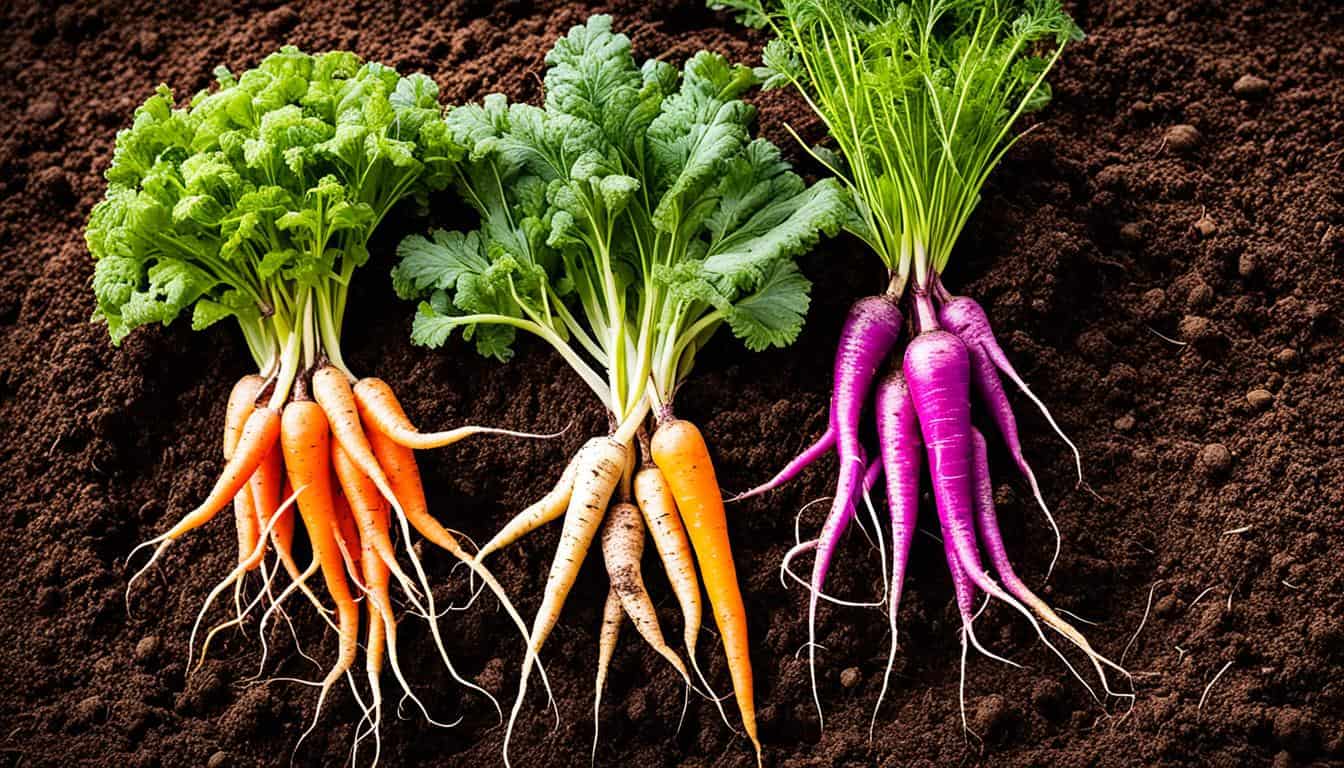
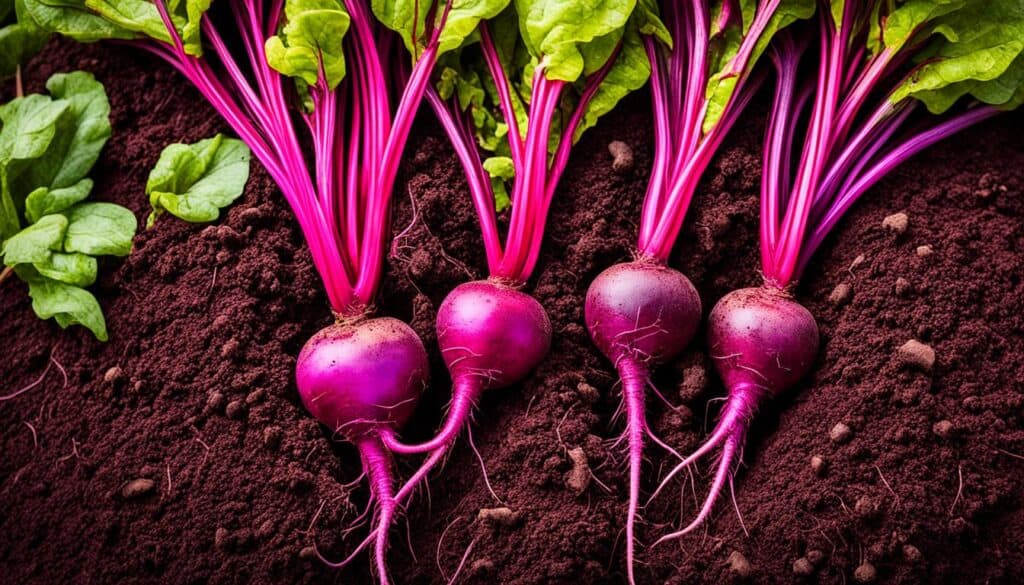

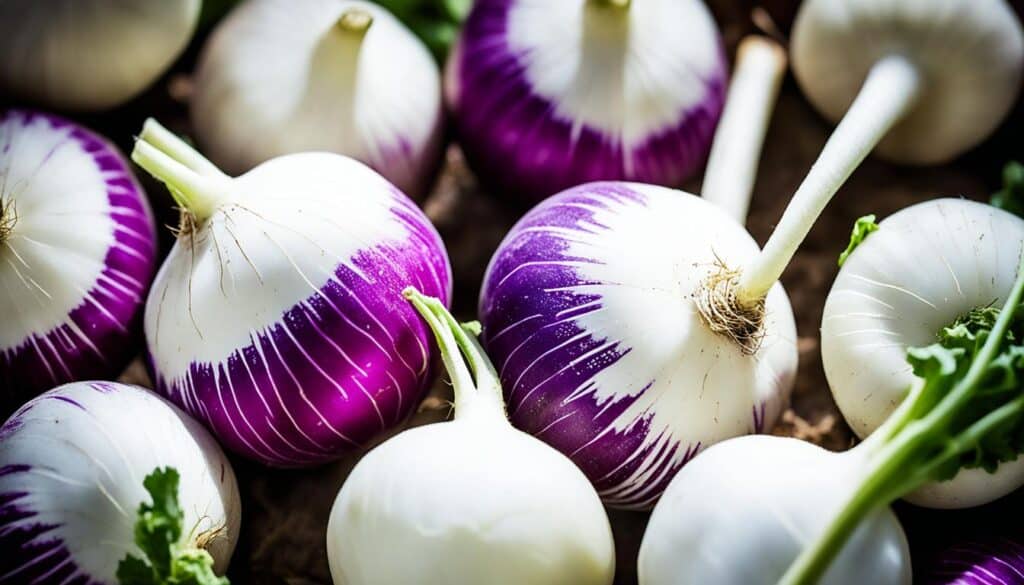
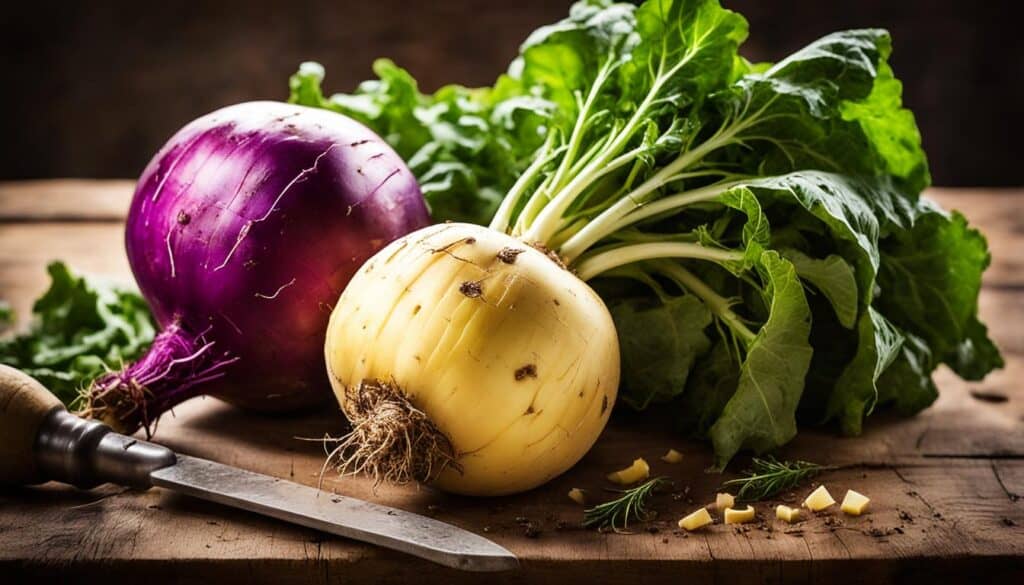


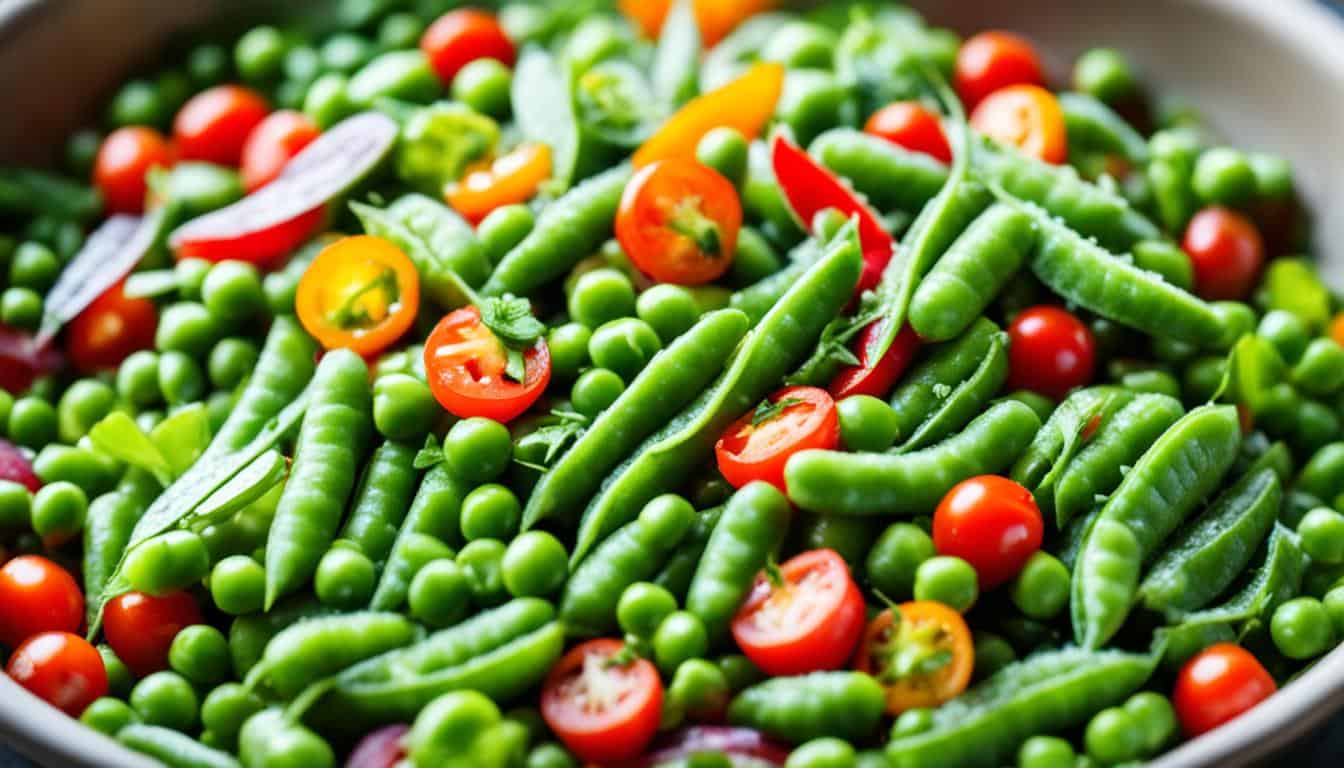
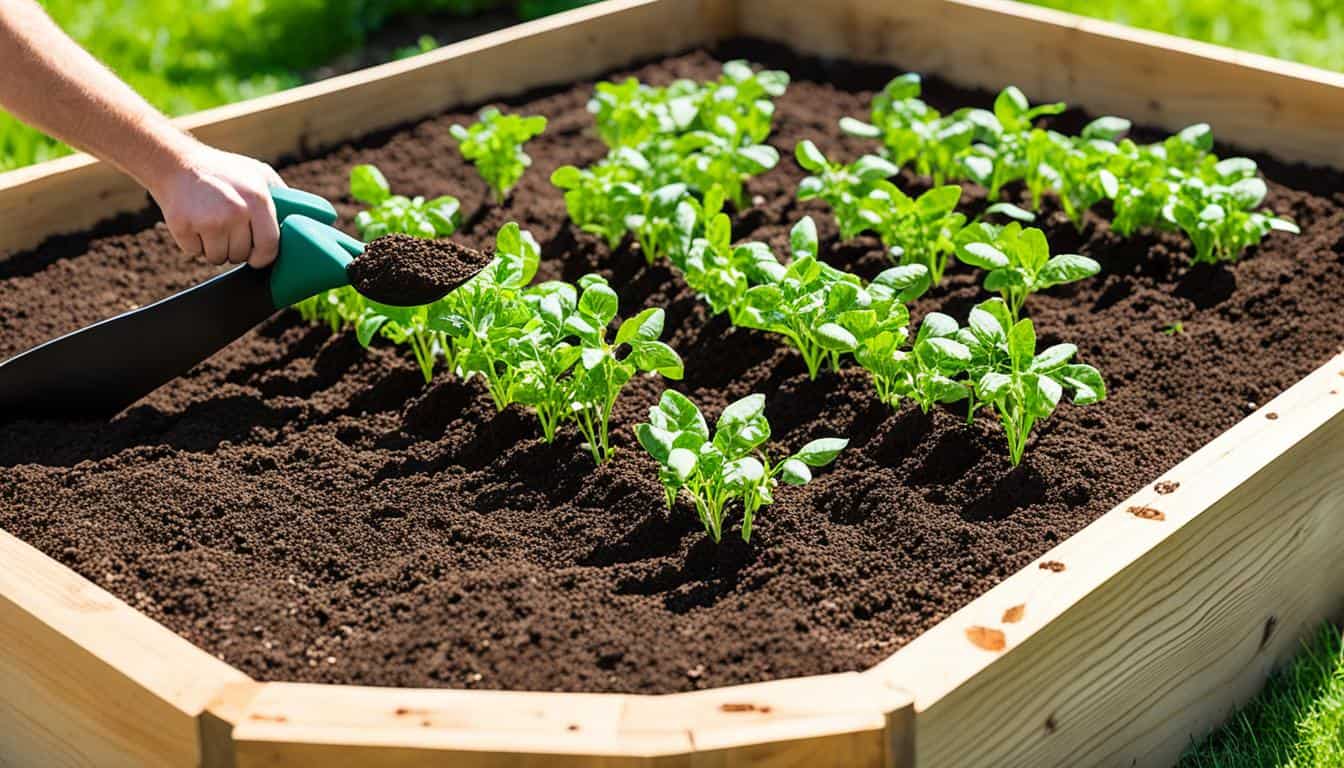
Leave a Reply